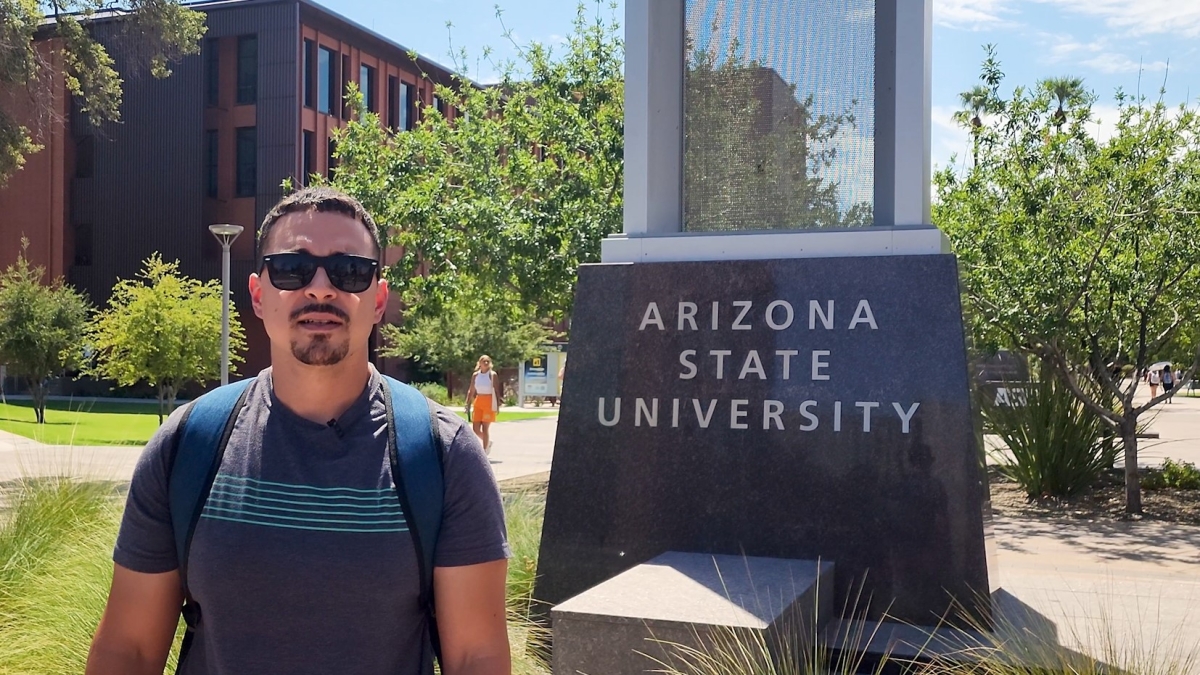Pathways for the Future honors scholarship awardee during Salute to Service week

Pathways for the Future honors scholarship awardee Gil Ruiz.
Editor's note: This story is part of our Salute to Service coverage, Nov. 8–18. Learn about the schedule of events.
For Gil Ruiz, the path to a college degree was not always straightforward. But thanks to Arizona State University’s Pathways for the Future program, the single father and military veteran will graduate with a Bachelor of Science in engineering (robotics) from the Ira A. Fulton Schools of Engineering.
Ruiz, an out-of-state transfer student, and other transfer students and former military service members like him are finding that ASU resources like the Pathways program and MyPath2ASU are helping them achieve academic success, not only by providing financial assistance, but also by allowing them to spend more time pursuing education and building professional networks.
“By helping me financially, that Pathways scholarship has allowed me to focus on my academics,” Ruiz said. “I'm a single father, and I work. Had it not been for the Pathways for the Future program, I’d probably have to get another part-time job. Now, I can just focus on hitting the books (and) on keeping my GPA up, which I'm super stoked about!”
Both Pathways for the Future and MyPath2ASU offer comprehensive support to students looking to transfer to ASU, wherever they may be in their academic journey. They also provide invaluable mentorship.
“Pathways is a resource for me not just financially, but for the mentorship they provide as well,” Ruiz said. “My current mentor has been very helpful with building my own professional network and helping me with building resumes the way that engineering companies want to see them.”
Pathways for the Future helps students develop connections between their peers, faculty, mentors and employers that enable lifelong learning and the skills needed to thrive in the workforce of the future. For qualified students, financial assistance is available while in the program, including help with any surprise costs or expenses.
“I even had a situation where I had to use emergency funding, and Pathways was right there to provide me with what I needed when I needed it,” Ruiz said. “I've never had any issues with anything that would keep me from continuing my education since day one, applying to ASU, until now, close to graduation.”
The Pathways for the Future scholarship and MyPath2ASU are designed to further ease the transition to ASU for transfer students like Ruiz.
“These days, people find it difficult to find the right resources for school, especially veterans,” said Ruiz. “At ASU, I've never had to struggle with that. That's made life so much easier.”